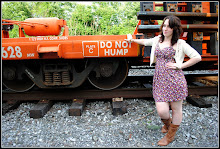Federico Fellini, an Italian director inspired by neo-realism, Hollywood and fantasies became a world renowned director for his distinct style and reoccurring themes in his films. Starting out as a neo-realist and later developing to films about dreams and the subconscious mind. La Dolce Vita a film that is was in between Fellini’s neo-realism and surrealism period, and is said to be Fellini’s greatest film by many critics. Another one of Fellini’s well known films, 8 1/2, a self reflective film that shows a directors struggle with writers block. Both films have similar themes, a man’s struggle with where he is in his life, but is executed in different ways.
La Dolce Vita depicts the life of journalist, Marchello Mastroiann, who writes for a gossip column but longs to become a serious, successful writer. This film was largely influenced by Fellini’s life when he worked as a journalist himself in his earlier years. The films main focus is a realistic view of the inner struggle with a man, who is at a cross road in his life. He doesn’t want to settle down but wants to make something more of himself. However, he is too easily distracted by women and the self indulgence of high society life. During the opening scene of the film, a statue of Christ being flown to the Pope at the Vatican with Marchello’s helicopter flying closely behind became highly controversial and lead to the censorship of the film. The opening scene was inspired by an actual event that Fellini witnessed. Also, the first scene is ironic in the fact that the statue of Christ is flying over Rome with outstretched arms as if it was blessing the people of Rome while underneath the glitz and glam of the characters are vapid, self indulgent individuals. The film has no formal structure and is just a continuation of episodes of celebrity soiree’s and social gatherings that start in the evening and end at dawn. The suicide of Marchello’s friend Steiner is one of the main points in the film. Steiner was wealthy, intellectual, successful and something that Marchello envied and wanted to become. In the ending scene, a young girl calls to Marchello but he is never able to hear what she says and walks on, this scene represents Marchello’s ignorance to the fakeness of the high society world that he has indulged himself in.
8 ½ refers to the Fellini’s eight and a half films as a director and is also autobiographical. The main character Guido Anselmi’s struggles with writers block and constant memories and dreams of his childhood represents Fellini himself. Throughout the film Guido is being hassled by his producer and actors agents to begin filming and working on his science fiction piece. However, due to attention being drawn to personal problems with relationships, and finding ones true happiness; Guido is unable to complete the film. The opening scene of Guido dreaming that he is in a traffic jam, that everyone surrounding him is blankly staring at him, and that he cannot breath in his car is a foreshadowing of what’s going to happen in the film. In a sense, Guido’s wife, producer, production crew, and his mistress, are all suffocating him with problems that he needs to fix. All eyes are on him and they are throwing all of these problems in his face and demanding they be done as soon as possible. Like the opening scene, daydreaming and flashbacks are frequent throughout the film. As the film progressed the dreams and flashbacks mix in with reality and become difficult to apprehend what is real. At the end of the film Guido shoots himself which is symbolization that he suddenly understands the causes of his confusion and is unhappiness. This scene leads to a montage of him stating to accept me as who I am.
Both films follow themes reoccurring themes in his films: self reflexive and struggling with the subconscious mind. Like most Fellini films. They were both inspired by life experiences. In La Dolce Vita and 8 ½ the main character is at a cross road in his life, struggling to find happiness and is influenced by friends and society that surrounds them. Another similarity is a religious theme. In La Dolce Vita the opening scene was banned from the Catholic Church for what they thought as Fellini mocking the second coming of Christ. In 8 ½ Guido’s childhood memories show him being punished by Catholic priests for conversing with a prostitute whom the priest claimed was the devil. Although both films share a basic theme, both are executed quite differently. One major difference between both films is that La Dolce Vita is a more realistic film. 8½ is filled with Guido’s dreams and fantasies where as La Dolce Vita is a series of realistic events.
Despite Fellini’s transition from neo-realism to baroque, fantasy films, Fellini stayed true to his ongoing themes. Both films are examples of his unique style which some may now call "Fellinian" and "Felliniesque".
Subscribe to:
Post Comments (Atom)

No comments:
Post a Comment